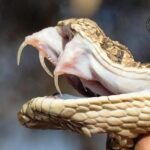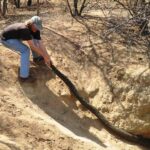Parabuthus scorpions are commonplace in Erongo province in Namibia. The area has unique geology, including red sandstone formations and granite mountains. It has a rugged, arid landscape with rocky outcroppings, mountains, and canyons.

This area is home to several species of scorpions, including the Namib Desert Golden Scorpion (Parabuthus transvaalicus), the Yellow thick-tailed Scorpion (Parabuthus villosus), and the Desert thick-tailed Scorpion (Parabuthus granulatus). These species are known for their venomous stings and typically live in rocky or sandy habitats.


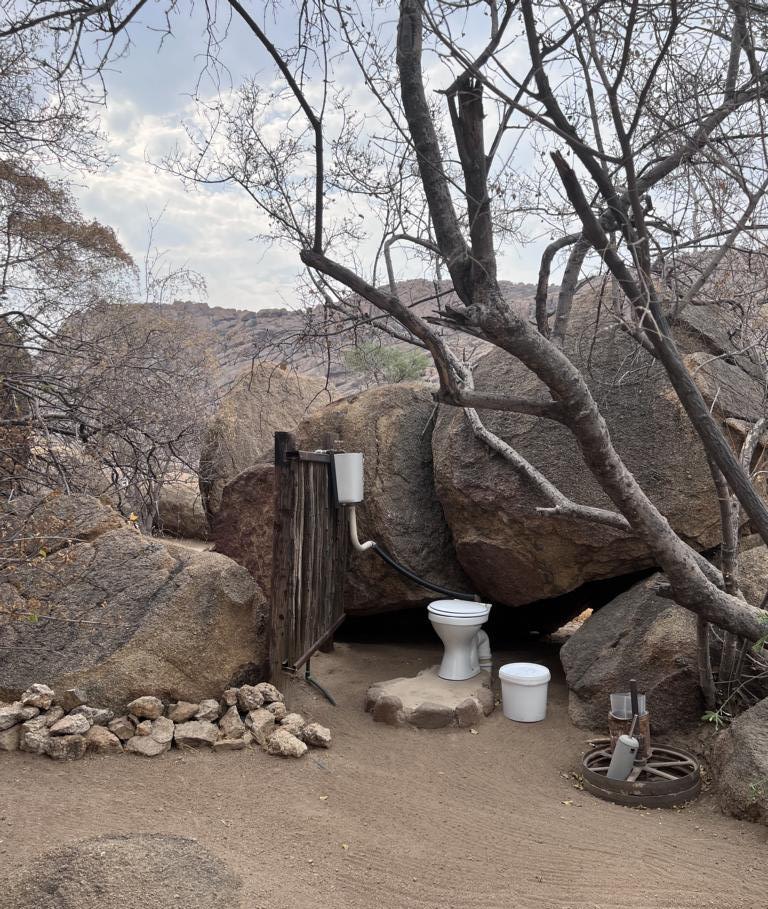
We did not care much about dangerous critters during our stay at a secluded campsite in Erongo province. We were completely alone there and overwhelmed by the gorgeous landscape around us. It was also too hot for snakes lying around during the daytime. What we did not expect, however, was the density of Parabuthus scorpions we spotted after dark.
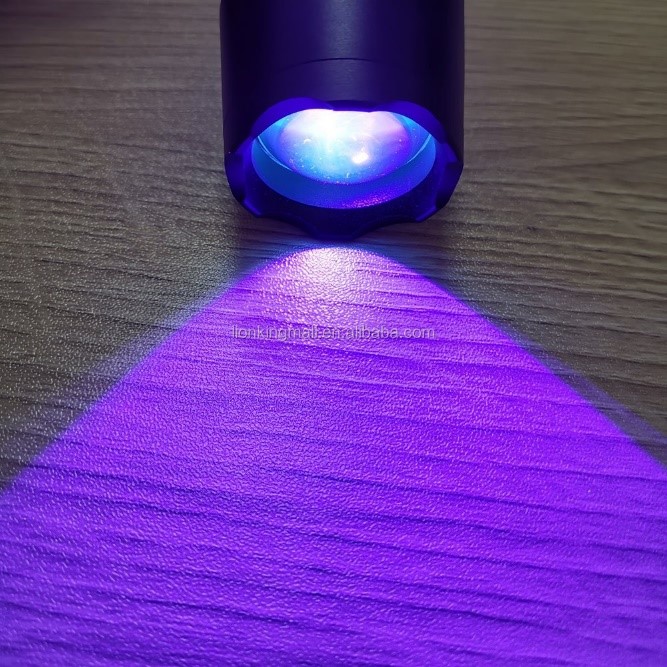
Scorpion fluorescence
Scorpions fluoresce under UV light in the range between 320 – 565 nm. The reason for this characteristic is hotly discussed and still not clear. However, newly molted scorpions do not fluoresce until the cuticle (exoskeleton) hardens. One thought explanation is that a molecule layer within the cuticle (‘hyaline layer’) will be aggravated by UV light and die off after some time. Therefore, if a scorpion is shined on permanently with UV light, this layer within the cuticle would mold away over a long period.
Commercial Blacklight torches with either 365 nm or 395 nm wavelengths of UV light are on the market to detect scorpions. We used a combined White LED and 395nm torch to spot scorpions at night and to use the same torch conventionally.
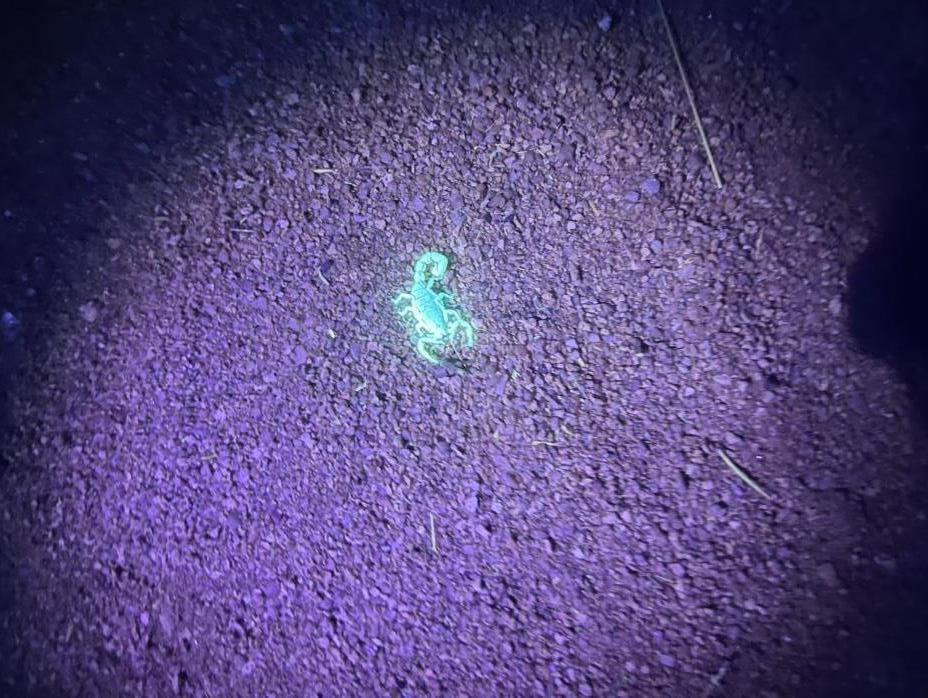

When walking 100 m from our tent to the shower & toilet area at dawn, we encountered four Parabuthus scorpions directly on the footpath. Without UV light, we would not have spotted them. Encountered scorpions were all from the same species and were Parabuthus villosus. They were typical morphs, but unfortunately, we did not take pictures under White light.
Yellow thick-tailed scorpion

Parabuthus villosus is relatively large, with males reaching up to 10 cm / 4’’ and females up to 18 cm / 7’’ in length. They have a thick, heavy tail, where they get their common name. Their venomous sting will cause severe pain and, in specific cases, even death. P. villosus are burrowing scorpions and are found under rocks and in crevices. As one of very few scorpion species, they are diurnal and hunt beetles and other prey during the daytime. But they are most active at dawn and early hours of night. In hindsight, we were lucky to have seen them. They are beautiful scorpions and fill their niche in the ecosystem where man is the intruder in their environment.
Medical treatment of Parabuthus stings
When walking around in Erongo nature after dark, it is imperative to use a white flashlight and repeatedly check with UV light for Parabuthus scorpions on the way. Not doing so and wearing flip-flops or open sandals could result in a very painful experience.
There is no specific anti-venom for stings from Parabuthus scorpions. However, general scorpion antivenom developed for stings from other species of scorpions may be used.
Treatment for a Parabuthus sting typically includes pain relief and symptom management, such as using ice to help reduce pain and swelling and administering antihistamines and steroids to reduce inflammation. In some cases, additional treatment, such as oxygen therapy, may be necessary for more severe symptoms. If stung by a scorpion, seeking medical attention as soon as possible is essential. This is particularly important if severe symptoms include difficulty breathing, muscle spasms, or convulsions.
Lessons learned from Parabuthus scorpions at Erongo:
- Erongo province in Namibia is rich in Parabuthus scorpion numbers and -species.
- Under 395nm UV light, scorpions can be seen fluorescing from up to 15 meters.
- Wearing flip-flops or open sandals after dawn and not using a UV torch is highly discouraged.
- There is no specific anti-venom for Parabuthus stings, but treatment includes pain relief and symptom management.
Further up in Africa, we found another scorpion species, Hottentotta trilineatus, under UV- and white light in Tanzania.
.


